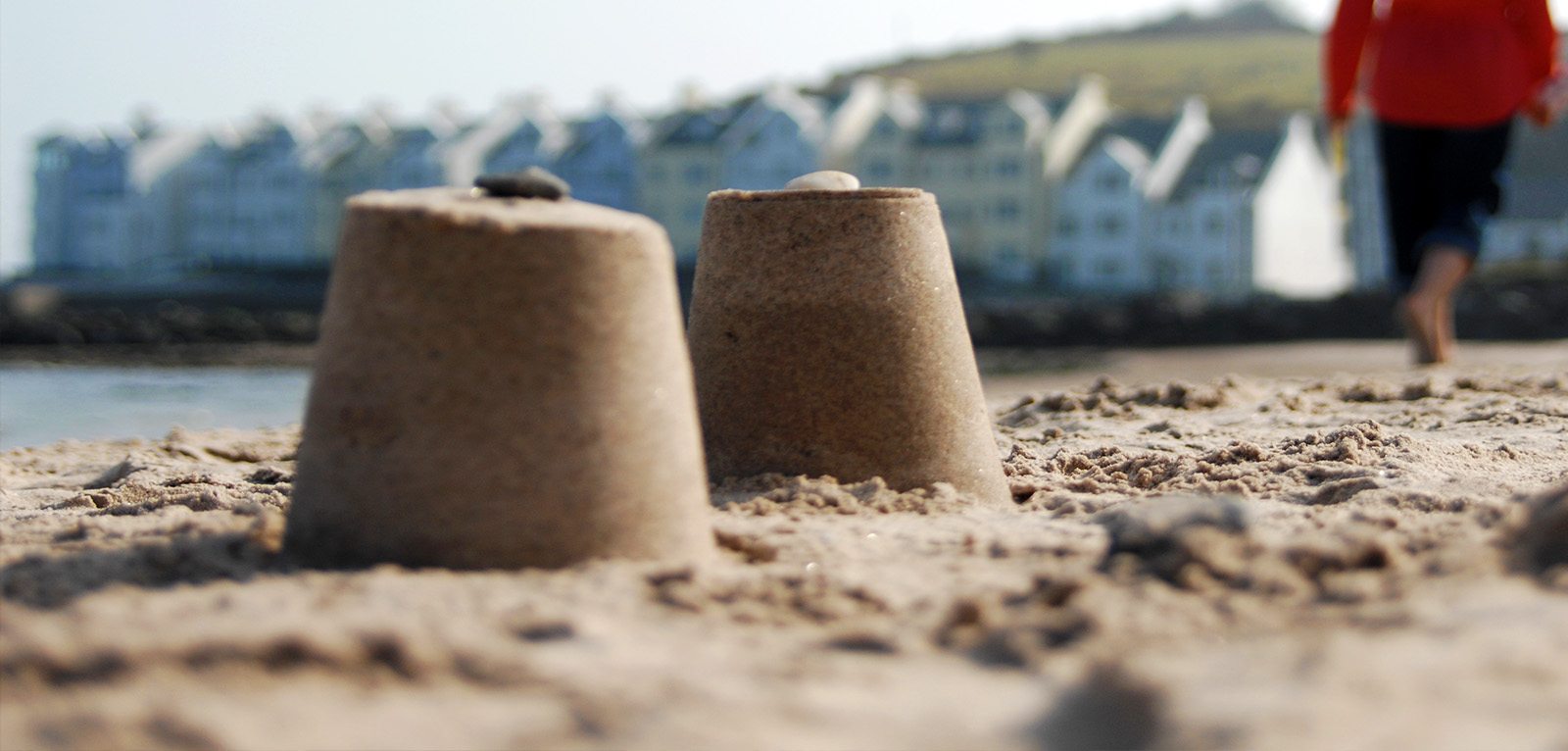Goodbye to sunburn thanks to Queen’s sunburn indicator
Sunbathers could soon tell when to take shelter in the shade thanks to an early warning sunburn indicator, developed by Queen’s University Belfast.

Researchers at Queen’s have developed a strip of plastic, containing ‘smart’ ink, which turns colourless from an initial blue colour just before exposure to too much ultraviolet light from the sun, prompting you to move into the shade before you burn.
The plastic strip, worn as a bracelet, changes colour at a speed that depends on the wearer’s skin type and can be worn at the same time as sun lotion, allowing users to enjoy the sun while avoiding unnecessary risks.
It is just one of a number of novel products based on ‘photocatalysis’, including antibacterial plastic films and water purifying bags, which has received a national award .
The technology was developed by Dr David Hazafy from Queen’s University’s School of Chemistry and Chemical Engineering, who has been awarded a Royal Academy of Engineering’s Enterprise fellowship, which gives academics £85,000 each to develop their research into viable commercial products.
Dr Hazafy’s spin-out company, SunCatalyst Laboratories, uses photocatalysts which work by harvesting energy from ambient sunlight to drive useful chemical reactions, such as destroying bacteria or pollutants and changing the colour of dyes.
Dr Hazafy, from the School of Chemistry and Chemical Engineering at Queen’s University, said: “The sunburn indicator works by using a photocatalyst and a redox dye in which the former absorbs the ultraviolet light and uses its energy to drive the change in the colour of the dye . The sunlight, or the total UV component, is collected throughout the day so the user is aware of the total dose of the harmful irradiation received by the band and warned when it nears the level which causes sunburn.
“Based on a metal oxide photocatalyst, this simple and inexpensive sunburn indicator should warn people when they are receiving too much of the UV component of sunlight, and prompt them to seek shade,” said Dr Hazafy.
In another of our photocatalyst-based technologies , the light-driven antibacterial plastic films could be used in a range of materials including hospital curtains, flooring, tiles and glass, to create a more sterile, safer environment.
Speaking about the Fellowship Dr Hazafy, said: “The Royal Academy of Engineering is a great opportunity to receive funding for 12 months, as well as mentoring and training to develop business skills. It is hoped that the products will be put forward for trials within the next year.”
SunCatalyst Laboratories is also utilising Dr Hazafy’s expertise in the application of photocatalysts to provide an independent testing service to the growing photocatalyst industry, helping a wide range of interested industries (in health-care, household cleaning products, food packaging and even clothes manufacturers) to get their own photocatalysts innovations to market.
Media
Media inquiries to Elaine Fitzsimons on e.fitzsimons@qub.ac.uk or (028) 9097 5310